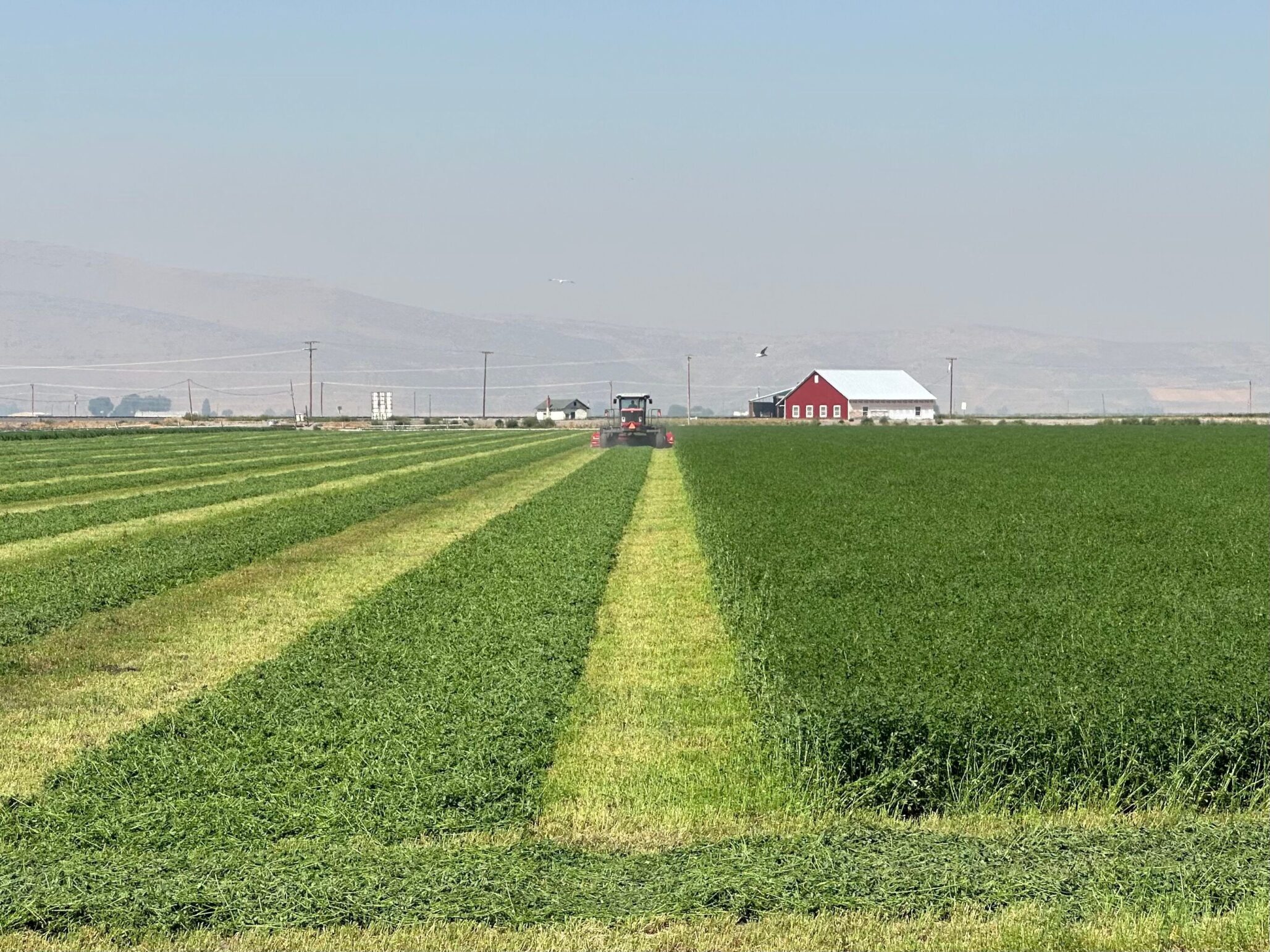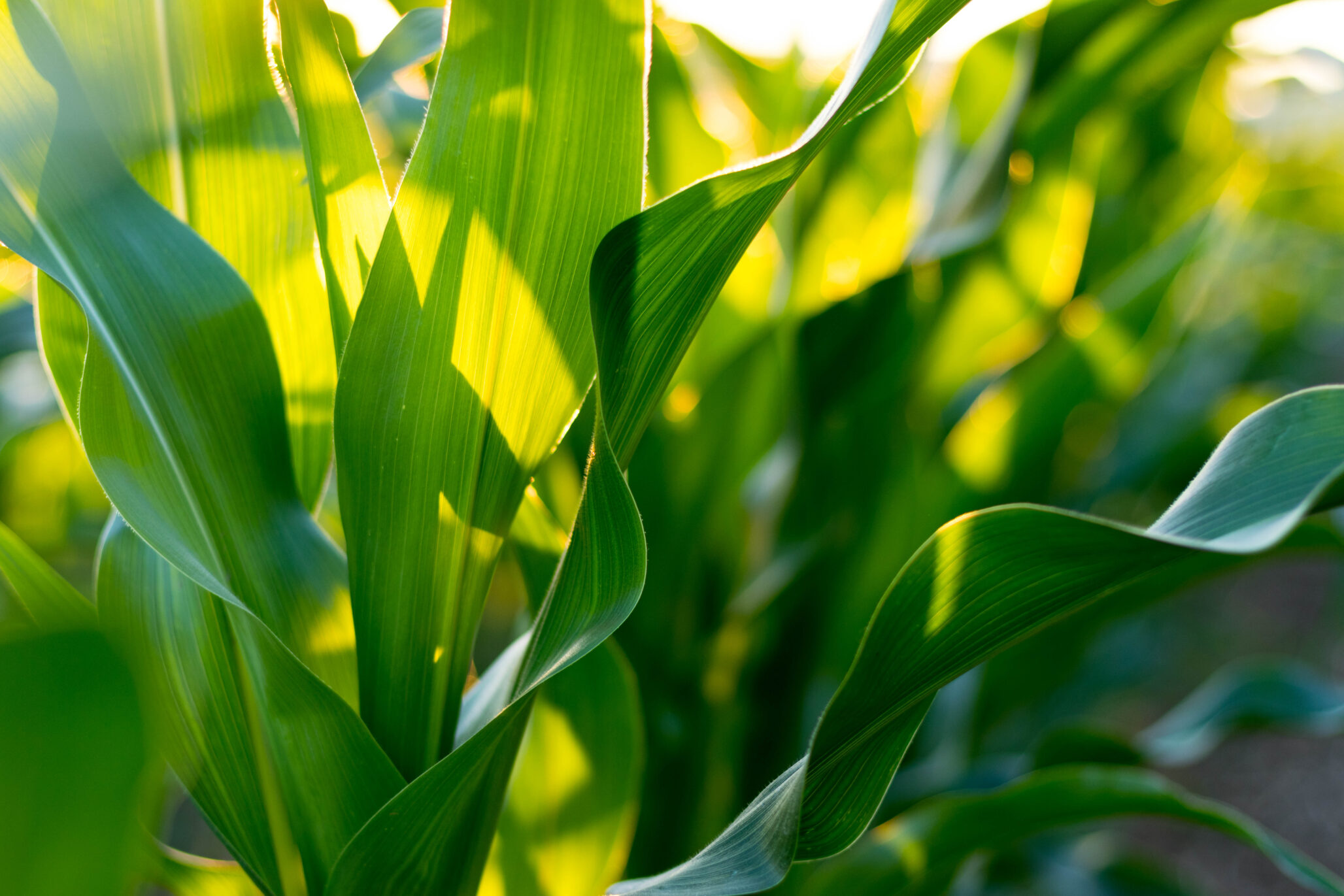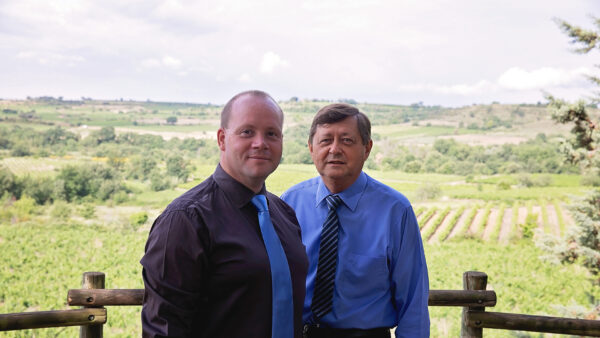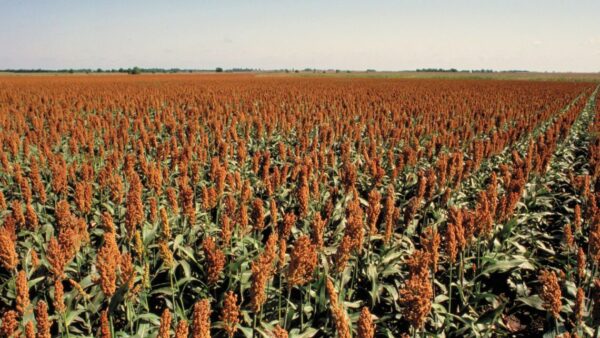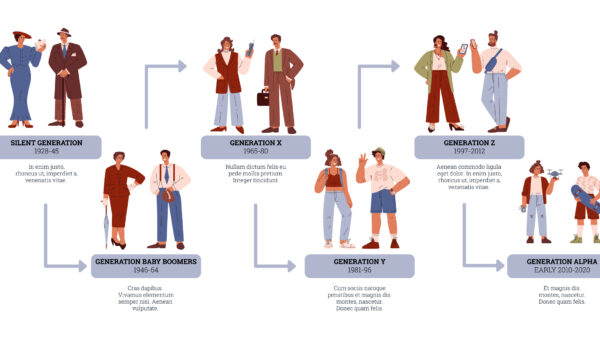Alfalfa remains a powerhouse forage despite shrinking acreage.
Alfalfa is sometimes called the “Queen of forages,” because it is a high-yielding nutritional powerhouse that has many soil benefits, drought tolerance and deep roots, all while being environmentally sustainable.
As a key nutrition source for cattle, especially the dairy industry, alfalfa is still one of the most valuable forages in the United States. While harvested acreage has generally trended downward over the past two decades, the total value of all alfalfa increased from $11.6 billion in 2021 to $12.9 billion in 2022 nationwide and in June 2024, the U.S. Department of Agriculture estimated 15.6 million acres for the year. The environmental benefits are also significant.
“Alfalfa is a fabulous crop for many reasons, not only as forage but also in rotation. Figuring out ways to keep it productive so that it can provide those benefits to the soil is really important beyond just producing alfalfa,” says Charlie Brummer, UC Davis Center for Plant Breeding director.
Today, researchers and seed breeders are working to increase yields, improve sustainability and expand markets for this important crop as producers are tasked with providing alfalfa hay, sileage and forage on less land with less water.
“We really haven’t seen an increase in alfalfa hay yields in decades,” Brummer says. He explains that while some acreage has been lost to tree crops in the West, water concerns are the main concern.
Water Worries
In the past, Brummer says alfalfa management was moving toward earlier harvest for very high-quality dairy hay or silage, so breeders have focused on very aggressive harvest management. However, now breeders are shifting focus to support new irrigation strategies, namely deficit irrigation.
This water-saving strategy intentionally provides the crop with less water than is needed over a period of time, providing significant savings as alfalfa typically has a high irrigation demand.
“Essentially, they (growers) will water until they don’t have water and then irrigation just stops for a couple of months,” Brummer says. “It really stresses the plants that way, so those things are very much on my mind as a plant breeder. We have to figure out where the management is heading and then try to breed under those conditions.”
Brummer’s lab is currently testing commercial varieties that are already available as well as their own experimental varieties. Growers in the region rely on the ebb and flow of the Colorado River for water.
“Given everything we know about water and the Colorado River, deficit irrigation management is going to become more and more important,” Brummer says. “In a couple of years, we’ll have a better idea on strategies to select for it as well as be able to give growers some information on which varieties already perform particularly well under that strategy.”
Another set of experimental varieties will go in the ground next year and Brummer hopes some of those will be worth releasing out to the commercial sector.
“The next couple of years will tell us a lot,” he says.
Seed companies can then use this research, ensuring farmers have access to high-quality seeds that perform well under changing conditions and limited resources.
“In the public sector, we’re developing technologies and germplasm that will be useful for the commercial sector, but whether we can reverse this yield stagnation and acreage decline remains to be seen,” Brummer says.
Rooted in Sustainability
Zhanyou Xu, a research geneticist in alfalfa breeding with the U.S. Department of Agriculture Agricultural Research Service (USDA-ARS), agrees that drought tolerance will continue to be a key breeding focus.
“Unlike with corn, alfalfa farmers in California can cut the crop up to 10 to 12 times and after each cutting, it typically needs to be watered,” he says. “This is why breeders must focus on water use efficiency.”
Xu’s recent work has been largely focused on divergent selection for the best root structure to achieve specific goals.
“Root system architecture (RSA) represents the second green revolution in plant breeding, offering significant potential for carbon sequestration, water and fertilizer use efficiency, sustainable agriculture, and enhancing ecosystem resilience for the changing climate,” Xu says.
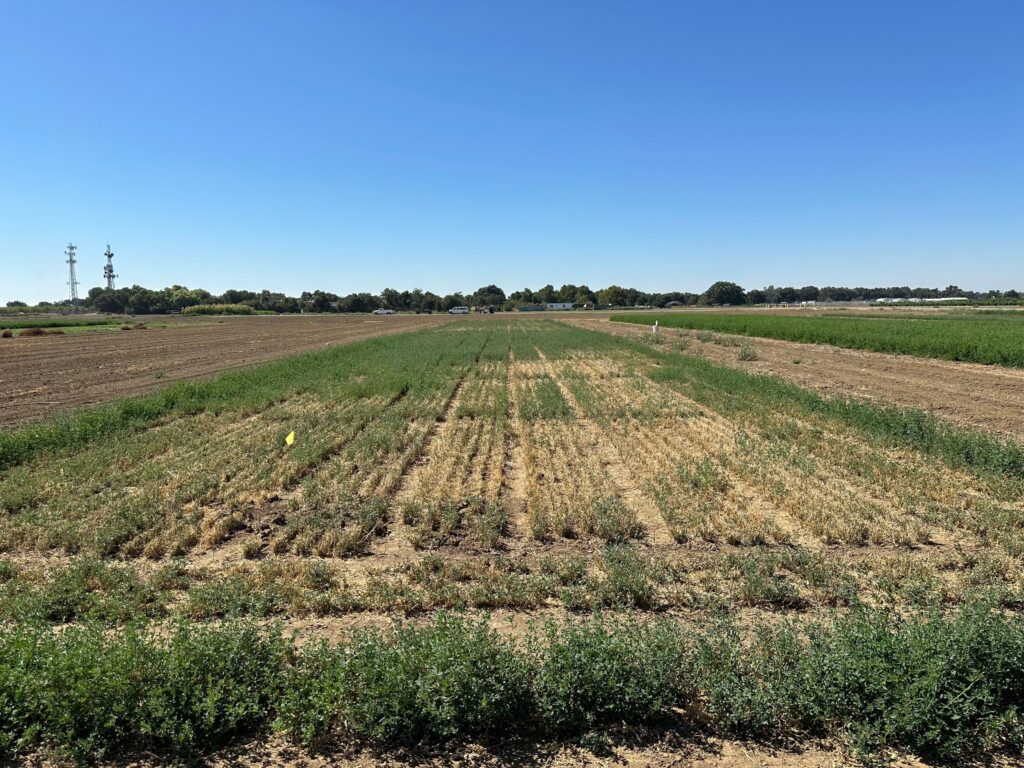
Researchers started with the original root type and planted about 4,000 plants, specifically looking for high fibrous and low fibrous content.
“Then, we intermated those two groups and generated a population where we selected high fibrous plants and low fibrous plants to intermate. We planted 8,000 of each for cycle two,” Xu says.
Eventually they ended up with four distinct categories: highly fibrous tap roots, highly fibrous branched roots, tap roots with low fibrous root content and branched roots with low fibrous root content.
“Right now, we are specifically selecting for those that have a lot of branched and fibrous roots because when the soil has a lot of fertility and plenty of water, for example, this structure allows the plant to really absorb all those nutrients and fertilizer quickly for a high biomass yield,” Xu says.
Growers can plant tap roots to enhance drought and heat tolerance, as these deep-reaching roots allow plants to access moisture and nutrients far below the surface, helping them thrive in dry conditions and withstand extreme heat.
“This is important because as the climate changes, we need to be able to adapt to extreme weather in different regions,” Xu says.
Nitrogen Fixation is the Secret Weapon
Researchers are also focused on improving alfalfa’s environmental benefits, including carbon sequestering. In fact, Xu believes the future of alfalfa lies in breeding specifically for sustainability benefits, but only if paired with incentives for farmers to focus on those goals.
“I don’t see alfalfa acreage going up unless varieties are planted that allow farmers to get more carbon sequestration and nitrogen fixation credits,” he says.
And though Xu’s root structure work has not yet been commercialized, available alfalfa varieties are already effective when used as a nitrogen fix.
“Essentially, alfalfa does not require nitrogen fertilizer,” says Daniel Putnam, professor emeritus of Cooperative Extension in the UC Davis Department of Plant Sciences. “In fact, it does so much good for the soil when used in a rotation that you can either reduce or even forego a nitrogen fertilizer application when you plant corn after alfalfa.”
“We would like to see alfalfa used in rotation in the Midwest, especially, because it does so much good for the soil,” Putnam adds.


